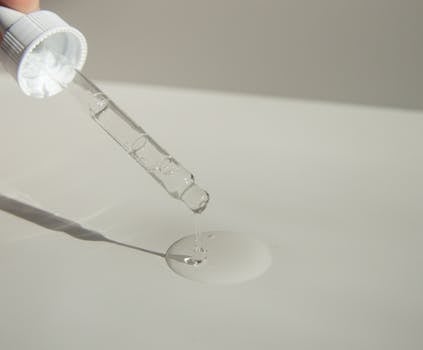Correct Serum Application: How to Apply Serum Correctly to Maximize Benefits
In the world of skincare, serums have emerged as a powerhouse product, delivering concentrated doses of active ingredients directly to the skin. However, the effectiveness of a serum is not solely dependent on its formulation; the method of application plays a crucial role in maximizing its benefits. This article will guide you through the correct application techniques to ensure you get the most out of your serum.
Understanding Serums: What Are They?
Serums are lightweight, fast-absorbing liquids that contain a high concentration of active ingredients. They are designed to penetrate deeper into the skin compared to traditional moisturizers. Common ingredients found in serums include:
- Hyaluronic Acid: For hydration
- Vitamin C: For brightening and antioxidant protection
- Retinol: For anti-aging
- Peptides: For skin repair and rejuvenation
Due to their potency, using serums correctly is essential to achieve desired results, whether it’s reducing fine lines, improving skin texture, or enhancing radiance.
Step-by-Step Guide to Applying Serum
To ensure that your serum works effectively, follow these steps:
1. Cleanse Your Skin
Start with a clean canvas. Use a gentle cleanser suitable for your skin type to remove dirt, oil, and makeup. This step is crucial as it allows the serum to penetrate the skin without any barriers.
2. Tone (Optional)
If you use a toner, apply it after cleansing. Toners can help balance the skin’s pH and prepare it for better absorption of the serum.
3. Apply Serum on Damp Skin
For optimal absorption, apply serum while your skin is still slightly damp. This helps to lock in moisture and enhances the serum’s effectiveness. Use the following technique:
- Dispense 2-3 drops of serum onto your fingertips.
- Gently press the serum into your skin, starting from the center of your face and moving outward.
- Use upward motions to promote circulation and lift.
4. Don’t Forget the Neck and Décolletage
Extend the application of serum to your neck and décolletage. These areas are often neglected but are equally susceptible to signs of aging.
5. Follow with Moisturizer
After the serum has absorbed (which usually takes a minute or two), apply a moisturizer to seal in the serum’s benefits. This step is vital for maintaining hydration and enhancing the serum’s effects.
Common Mistakes to Avoid
Even with the best intentions, mistakes can hinder the effectiveness of your serum application. Here are some common pitfalls to avoid:
- Using Too Much Product: A little goes a long way. Over-applying can lead to product buildup and irritation.
- Applying on Dry Skin: Applying serum on dry skin can limit absorption and effectiveness.
- Skipping Sunscreen: If your serum contains active ingredients like retinol or vitamin C, always follow up with sunscreen during the day to protect your skin.
Case Studies: The Impact of Correct Serum Application
Research has shown that proper application techniques can significantly enhance the efficacy of skincare products. A study published in the Journal of Cosmetic Dermatology found that participants who applied serums correctly experienced a 30% increase in skin hydration levels compared to those who did not follow recommended application methods.
Another case study involving a group of women using vitamin C serums demonstrated that those who applied the serum on damp skin reported a 25% improvement in skin brightness and texture over eight weeks, compared to a control group.
Conclusion: Maximize Your Serum’s Potential
Applying serum correctly is essential for maximizing its benefits. By following the steps outlined in this article—cleansing, toning, applying on damp skin, and sealing with moisturizer—you can enhance the effectiveness of your serum and achieve healthier, more radiant skin. Avoid common mistakes, and remember that consistency is key. With the right application techniques, your serum can become a transformative part of your skincare routine.
